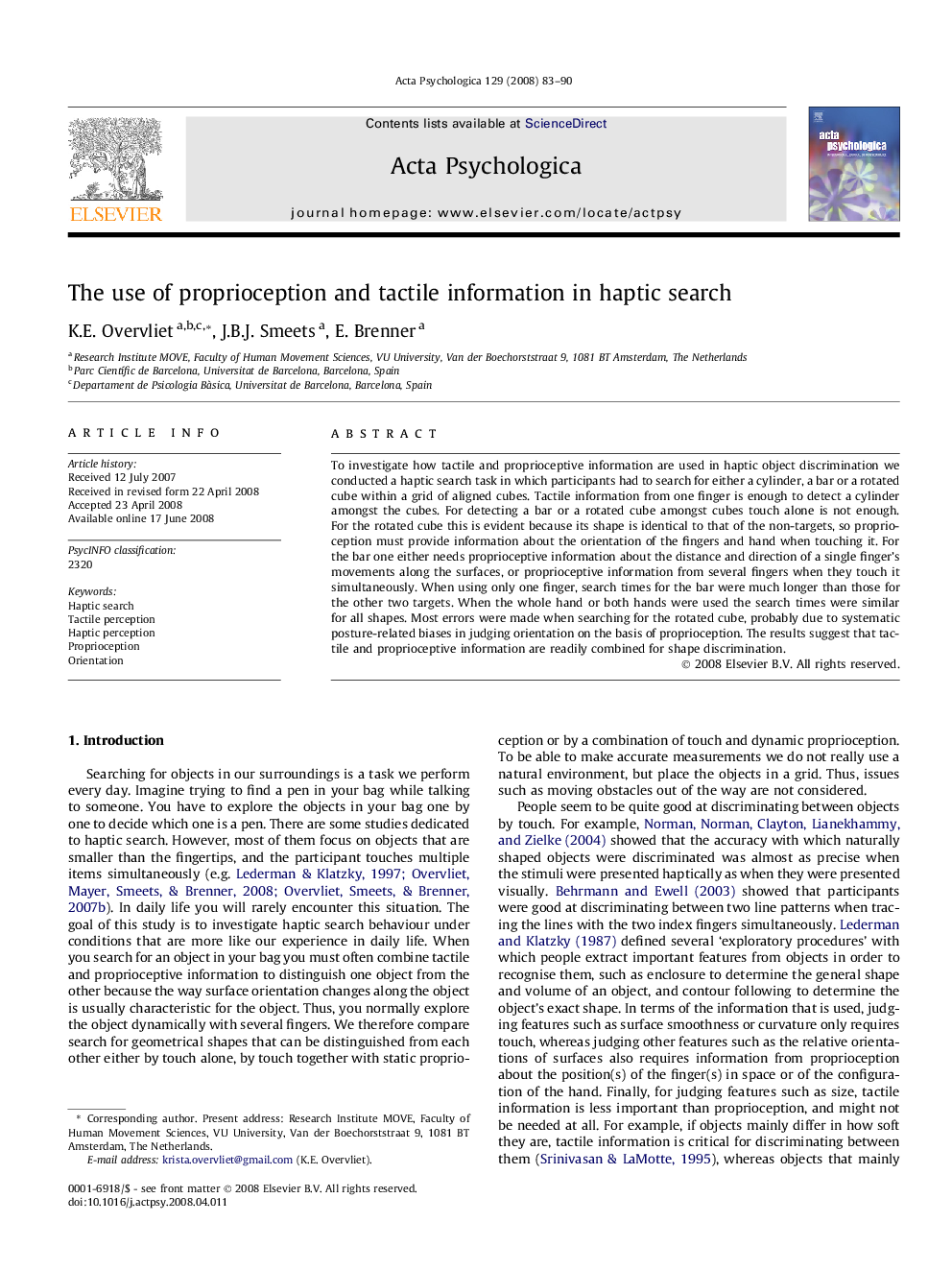| Article ID | Journal | Published Year | Pages | File Type |
|---|---|---|---|---|
| 920398 | Acta Psychologica | 2008 | 8 Pages |
To investigate how tactile and proprioceptive information are used in haptic object discrimination we conducted a haptic search task in which participants had to search for either a cylinder, a bar or a rotated cube within a grid of aligned cubes. Tactile information from one finger is enough to detect a cylinder amongst the cubes. For detecting a bar or a rotated cube amongst cubes touch alone is not enough. For the rotated cube this is evident because its shape is identical to that of the non-targets, so proprioception must provide information about the orientation of the fingers and hand when touching it. For the bar one either needs proprioceptive information about the distance and direction of a single finger’s movements along the surfaces, or proprioceptive information from several fingers when they touch it simultaneously. When using only one finger, search times for the bar were much longer than those for the other two targets. When the whole hand or both hands were used the search times were similar for all shapes. Most errors were made when searching for the rotated cube, probably due to systematic posture-related biases in judging orientation on the basis of proprioception. The results suggest that tactile and proprioceptive information are readily combined for shape discrimination.
